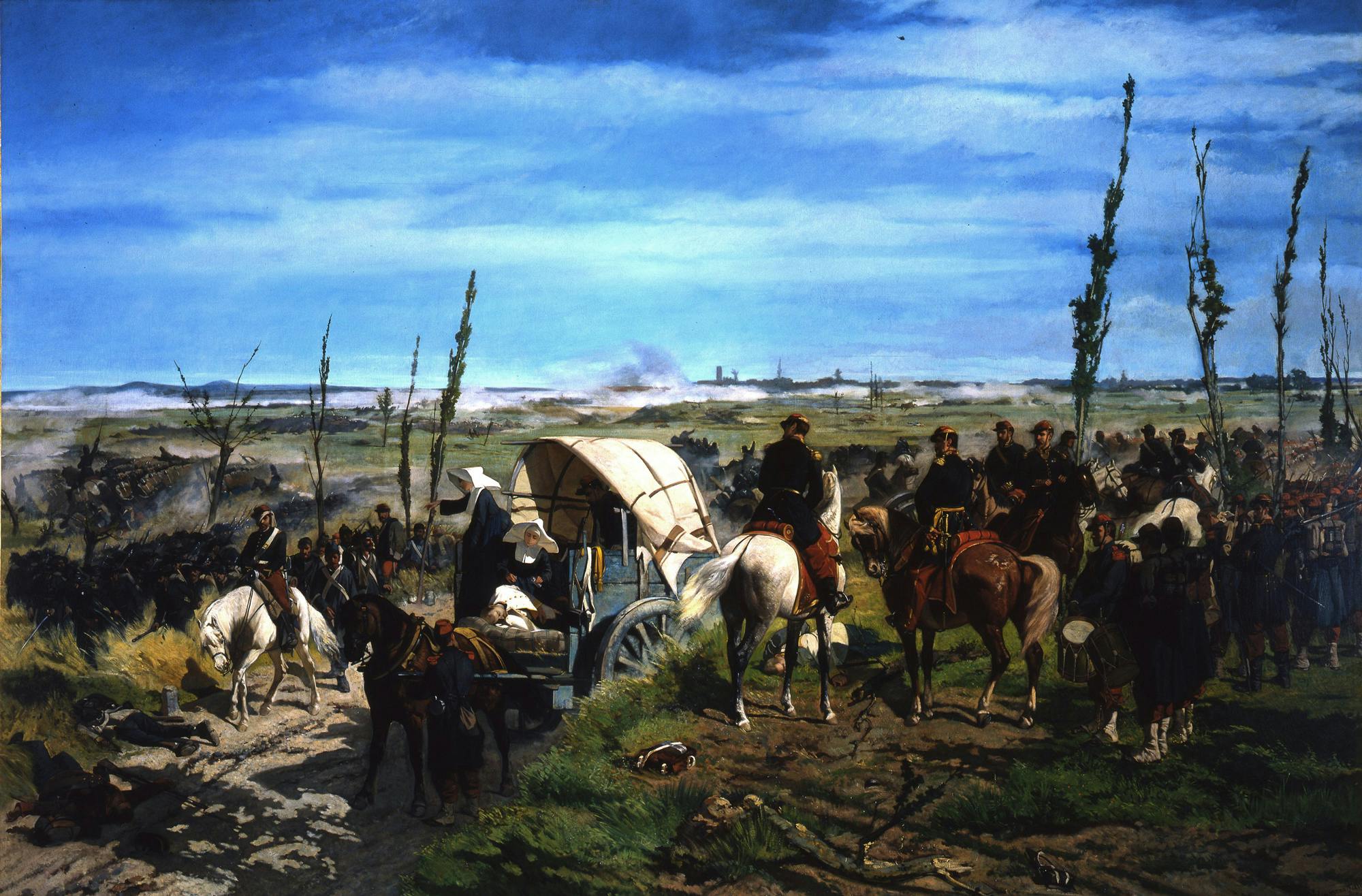After the battle of Magenta
Giovanni Fattori (Livorno 1825 - Florence 1908)
Having embarked on the road to participate in the Italian independent unification process, in September 1859, the Provisional Government of Tuscany, chaired by Bettino Ricasoli, who had taken office a few months earlier after the departure of the Lorraine Grand Duke Leopold II, called for a painting contest to produce various works on the Risorgimento theme, including four canvases celebrating the battles of Curtatone, Montanara, Magenta and San Martino. A visual epic had to be created for the unified state that was being formed and artists were asked to undertake this task.
Giovanni Fattori, who had just turned twenty-four, presented two sketches dedicated to the theme of the Battle of Magenta, an episode of the Second War of Independence (4 June 1859): one of the two sketches, now in the Modern Art Gallery of Pitti Palace, depicts the assault on the Austrian posts by the troops of Napoleon III, an ally of the House of Savoia; the other, now in the Modern Art National Gallery in Rome, depicts the charity nuns' wagon helping the wounded on the battlefield. The commission chose the latter as the winner and decided to set aside all warlike rethorics in favour of a human and compassionate perspective on the tragedy of war.
The large painting now exhibited in the Modern Art Gallery is the final version of the sketch in question: Fattori was given a sum of money to create it, with which the painter decided to visit the battle sites in Lombardy, in response to the instructions he received from the examining commission, which, among other things, asked him to bear a greater resemblance to the area where the battle took place. The painter left the following year with his young wife, Settimia Vannucci, thus giving her the honeymoon they would not have otherwise afforded.
Fattori's masterly narrative talent allowed him to depict the "war of the vanquished", "his" war, with the compassionate action of the nuns carrying a wounded Austrian soldier on a cart at its centre; however, he did not neglect to portray victorious officers and soldiers, on an embankment to the right, their backs turned, and he painted the fumes of the battle still raging in the background.
As often found in the large-format paintings by the Macchiaioli master, the composition is only apparently simple: the horizontal planes on which the figures stand in the foreground and in depth, and to which the motionless blue sky acts as a counterpoint, are moved by numerous diagonals that lead the eye to the main lines of the narrative, such as the one on the left along the white road towards the central scene, or the one that from the right foreground intercepts the white horse in the centre, with the officer riding it, which acts as a counterpoint to the wounded soldier that the nun is tending to.
The painting is accurate and precise, but renounces the dazzling effects that Fattori may have acquired from the historical romanticism painting of master Giuseppe Bezzuoli. Natural light, realistic shadows, compact forms, and the rendering of only the details needed to define the scene as a whole, without compromising the formal composition that is also a narrative summary: these are the tools with which the young Fattori presented his still not fully completed painting at the Italian Exhibition in Florence in 1861, and then in the spring of 1862 at the "Società Promotrice di Belle Arti".
La Galleria d'arte moderna di Palazzo Pitti. Storia e collezioni, a cura di C. Sisi, Milano 2005, pp. 160-161.
